Image: Henrik Sorenson/Getty
Almost every runner hits a plateau at some point in their training, and usually there's a predictable reason: You're spending too much time pounding pavement and not enough time in front of a weight rack, says Stephen Cheuk, founder of S10 training studio in New York City.Logging regular miles to build up your endurance is just one part of the formula you need to follow in order to become a stronger, faster runner, Cheuk adds. The other half is strength—specifically, your core and your glutes, he adds. These muscles work like a little like the suspension on a truck—the stronger they are, the smoother your ride, and the less likely you'll be to break down before the finish line. Add these moves to your routine at least once or twice a week—the number of reps and sets will vary depending on your level of fitness. Generally speaking, if you're a beginner, aim for 3 sets of 12 reps. If you're more experienced, go for 5 sets.The Move: Reverse Lunge
Why It's Important: Rep after rep, reverse lunges hit your glute medius better than almost any other exercise, and that's important, since it's one of the muscles most critical to acceleration. This exercise also hits your hamstrings, quads, calves, and stabilizer muscles, working all the muscles you'll engage on any given run.
How to Do It: Stand tall with your feet hip-width apart and hold a dumbbell in each hand down at your sides. From here, take an exaggerated step backward with one leg, and slowly lower your body until both of your legs form 90-degree angles. Your back heel will lift off of the floor. Try to keep your front knee from jutting very far forward past your toes. Push through the base of your front foot to extend the leg and bring your back foot to start. If you experience knee pain, try leaning your torso forward just slightly while maintaining a flat back.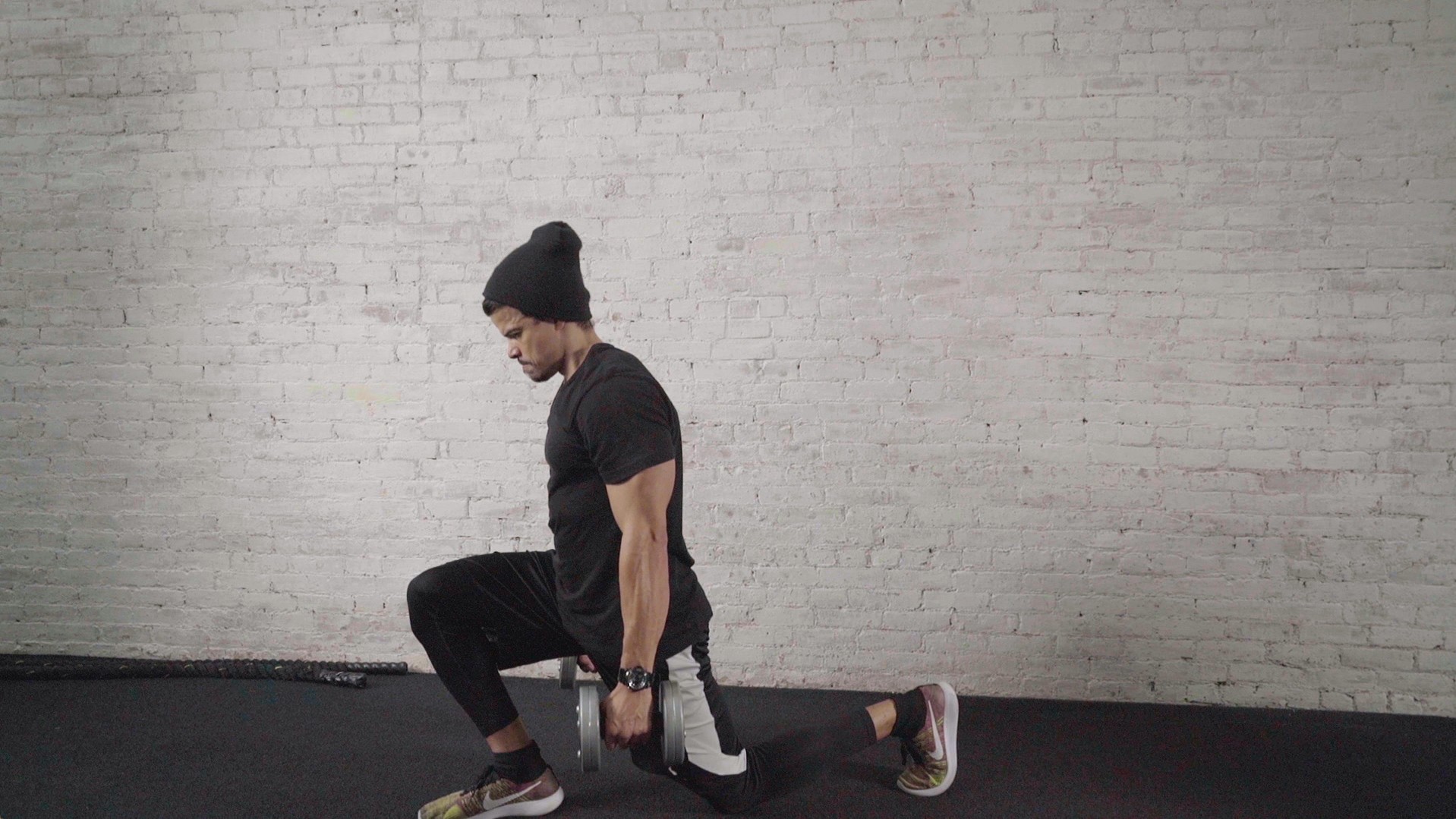 The Move: Plié Squat
The Move: Plié Squat
Why It's Important: While most squat variations will strengthen your glutes, quads, and hamstrings, this one carries the added benefit of working your inner thighs, too.
How to Do It: Stand tall with your feet greater than shoulder-width apart, toes turned out diagonally from your body, and hold a dumbbell at its base with both hands in front of your chest. From here, push your hips back, bend your knees, and lower your body until your thighs are parallel to the floor. Pause, then push through your feet and extend your hips to raise yourself back to start.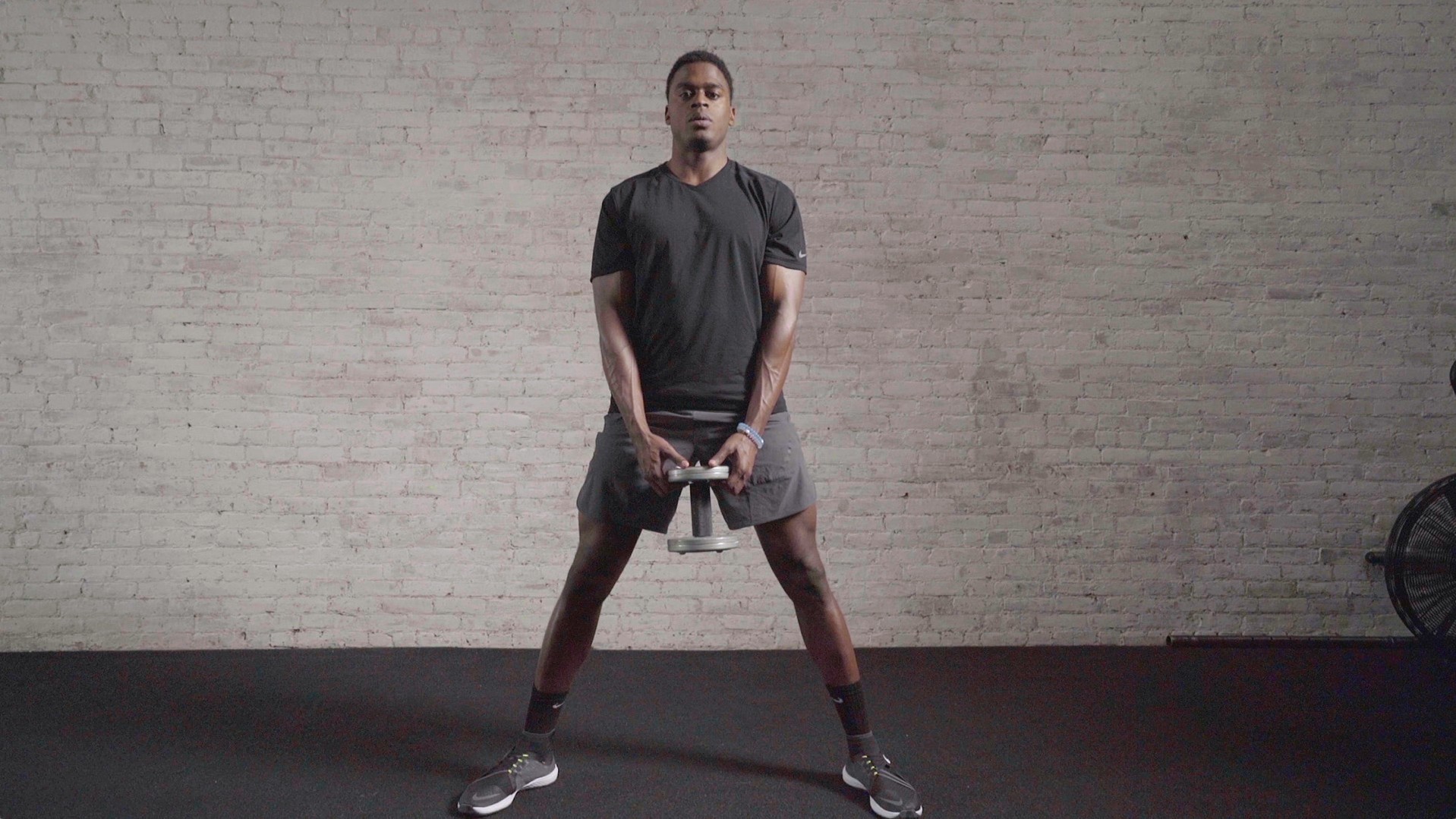 The Move: Banded Glute Thrust
The Move: Banded Glute Thrust
Why It's Important: By looping a resistance band around your legs and holding it tight throughout, you'll activate your glute max to an even greater degree while also giving your glute medius (side butt) some much-needed work.
How to Do It: Lie on your back on the floor with your knees bent and feet flat on the floor, shoulder-width apart. Secure a resistance band around your thighs, close to your knees, and open your knees just slightly so that you feel some tension in the sides your hips. From here, squeeze your glutes to lift your hips toward the ceiling so that your body forms a straight line from your knees to your chest. Pause, then slowly reverse the movement back to start. To make it harder, you can do it one leg at a time or hold a dumbbell or barbell on top of your hips.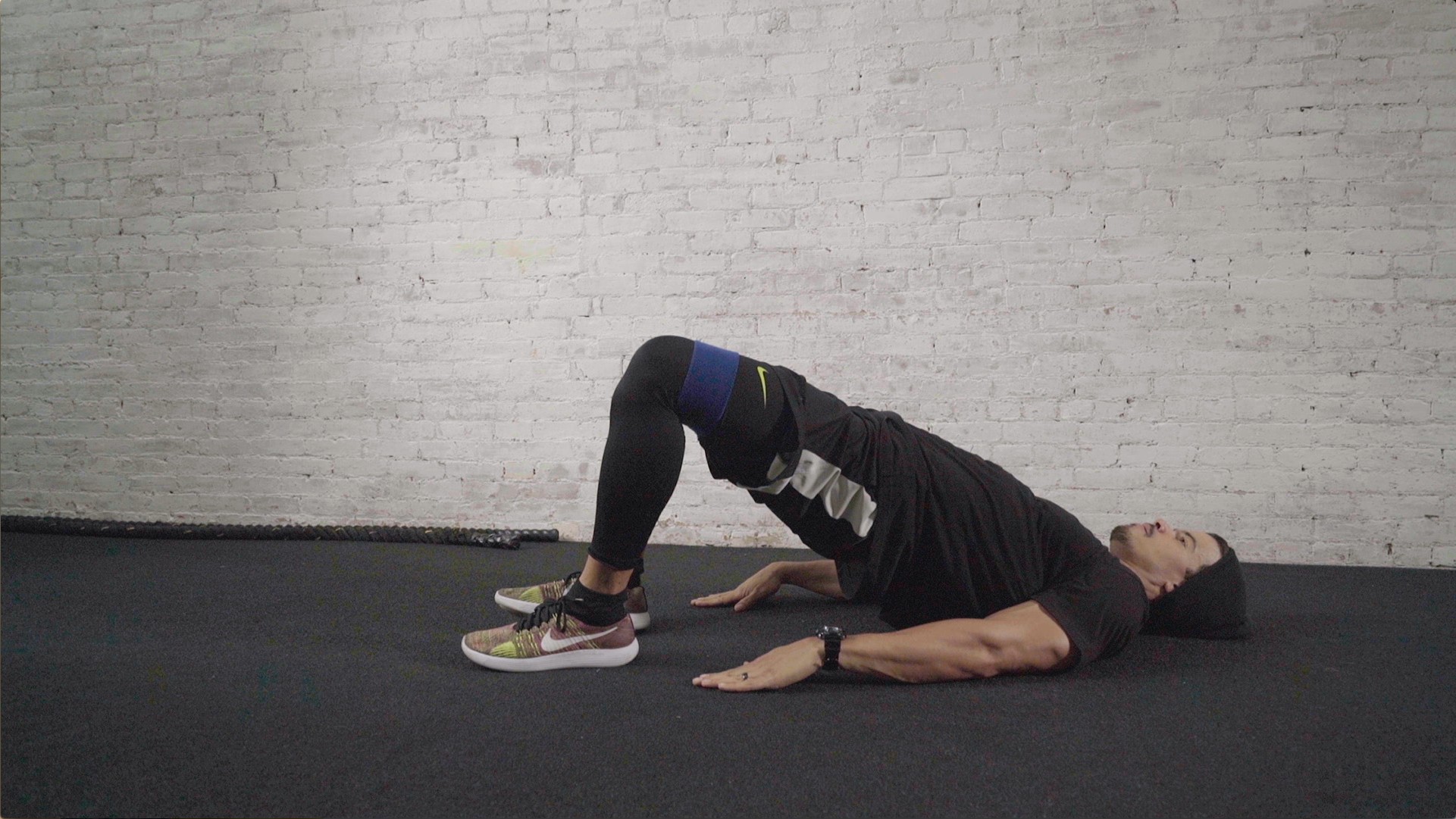 The Move: Romanian Deadlift
The Move: Romanian Deadlift
Why It's Important: This deadlift variation strengthens your whole posterior chain and targets your glutes and hamstrings, both of which are critical to sculpting a stronger butt. Depending on how much weight you load the bar with, it's perfect for both newbies and weight-lifting veterans—just focus on keeping proper form.
How to Do It: Stand tall with your feet hip-width apart and, with an overhand grip, hands just wider than shoulder-width apart, hold a loaded, straight barbell in front of you and touching your thighs. From here, hinge at the hips and, allowing a very slight bend in your knees, slide the bar down your legs. Make sure to maintain a flat back as you descend. Once the bar reaches just below your knees and you feel a slight pull in the back of your thighs, thrust your hips forward to return to start. Squeeze your glutes at the top.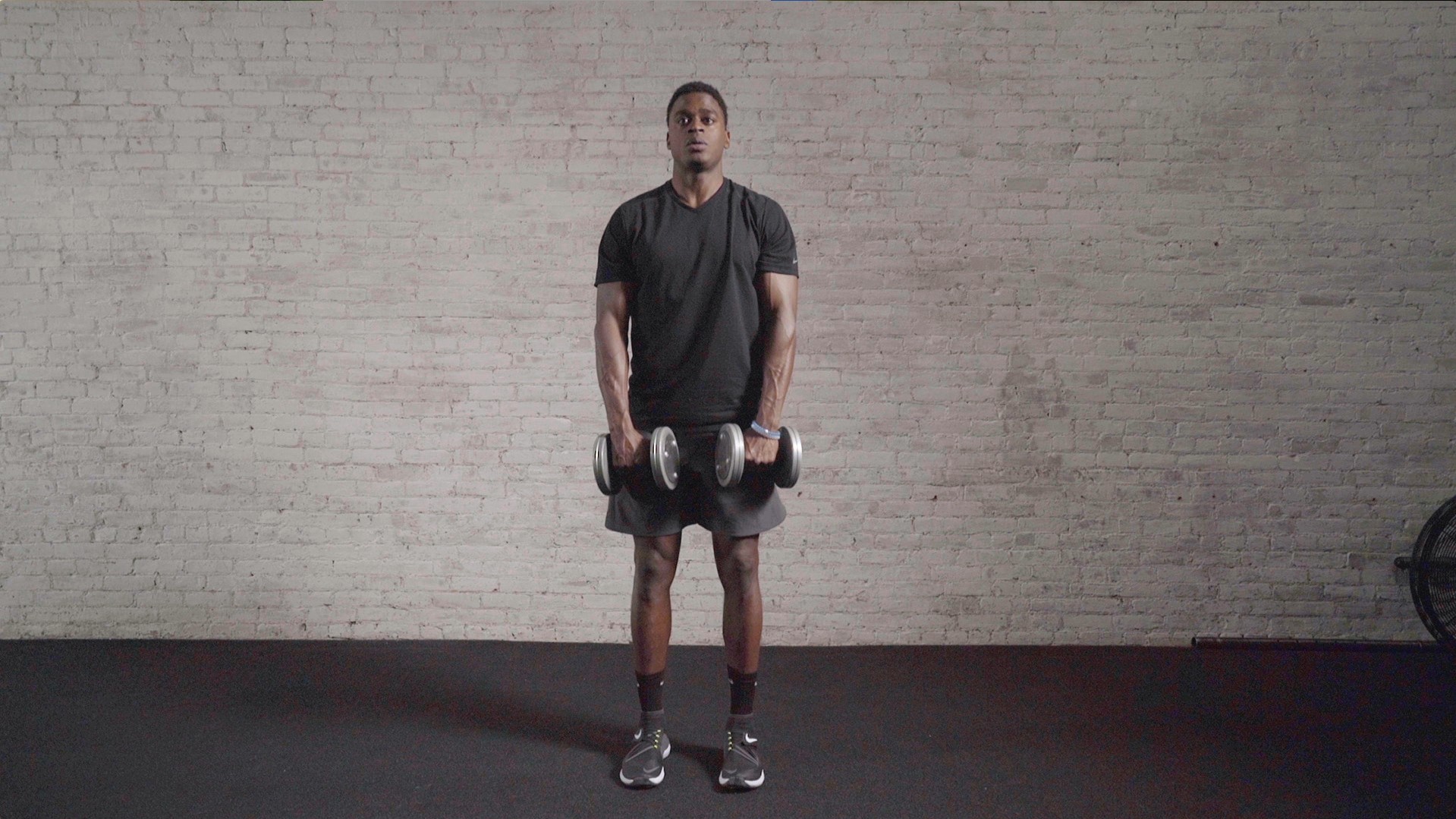 The Move: Renegade Row
The Move: Renegade Row
Why It's Important: By taking your typical high plank and adding in rows, this exercise hits your entire core—including your abs, obliques, and back muscles—from every angle. Expect as a side effect to stand taller, look stronger, and walk with more confidence.
How to Do It: Place two dumbbells on the floor, shoulder-width apart, and while holding the dumbbell handles, get into a high plank. Brace your core so that your body forms a straight line from head to heels. If you're having trouble balancing, set your feet wider apart for more support. From here, row one dumbbell to the side of your ribcage, working to keep from "dumping" your weight into the opposite side of your body. Pause, then lower the weight back to the floor.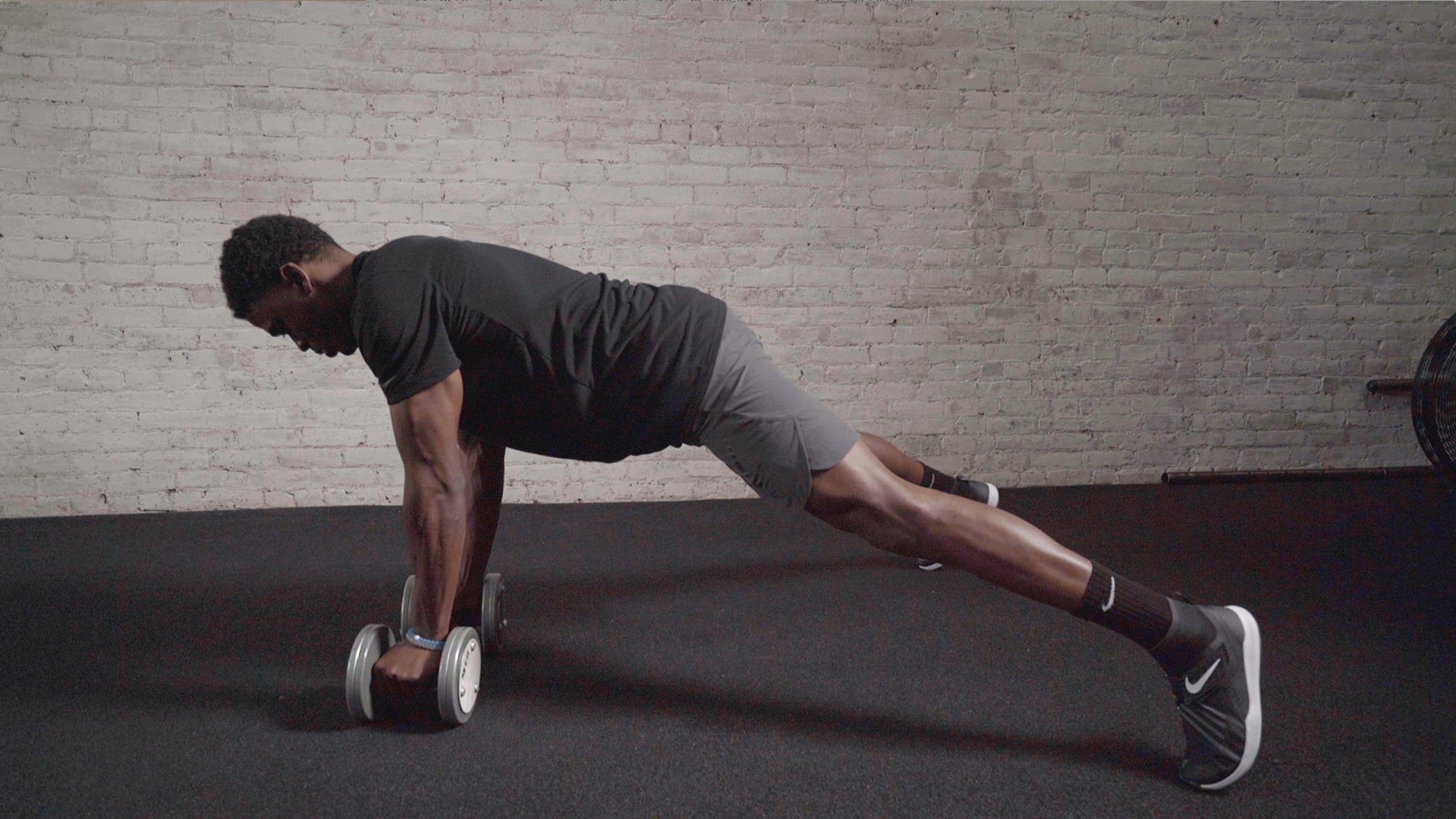 The Move: Cross V-Ups
The Move: Cross V-Ups
Why It's Important: By involving both upper- and lower- body flexion and extension, this move does wonders for the entire length of your rectus abominis (your six-pack muscles), which are key to maintaining posture and proper form, both of which tend to break down over the course of a race or long run.
How to Do It: Lie on your back on the floor with your arms and legs extended so that your body forms one long line on the floor. From here, simultaneously crunch your torso up, bringing one arm forward as you do so and raising the opposite leg up off the floor. Touch your opposite hand and foot to each other, pause, and then slowly lower back to start. Focus on not using momentum to swing your body up with each rep.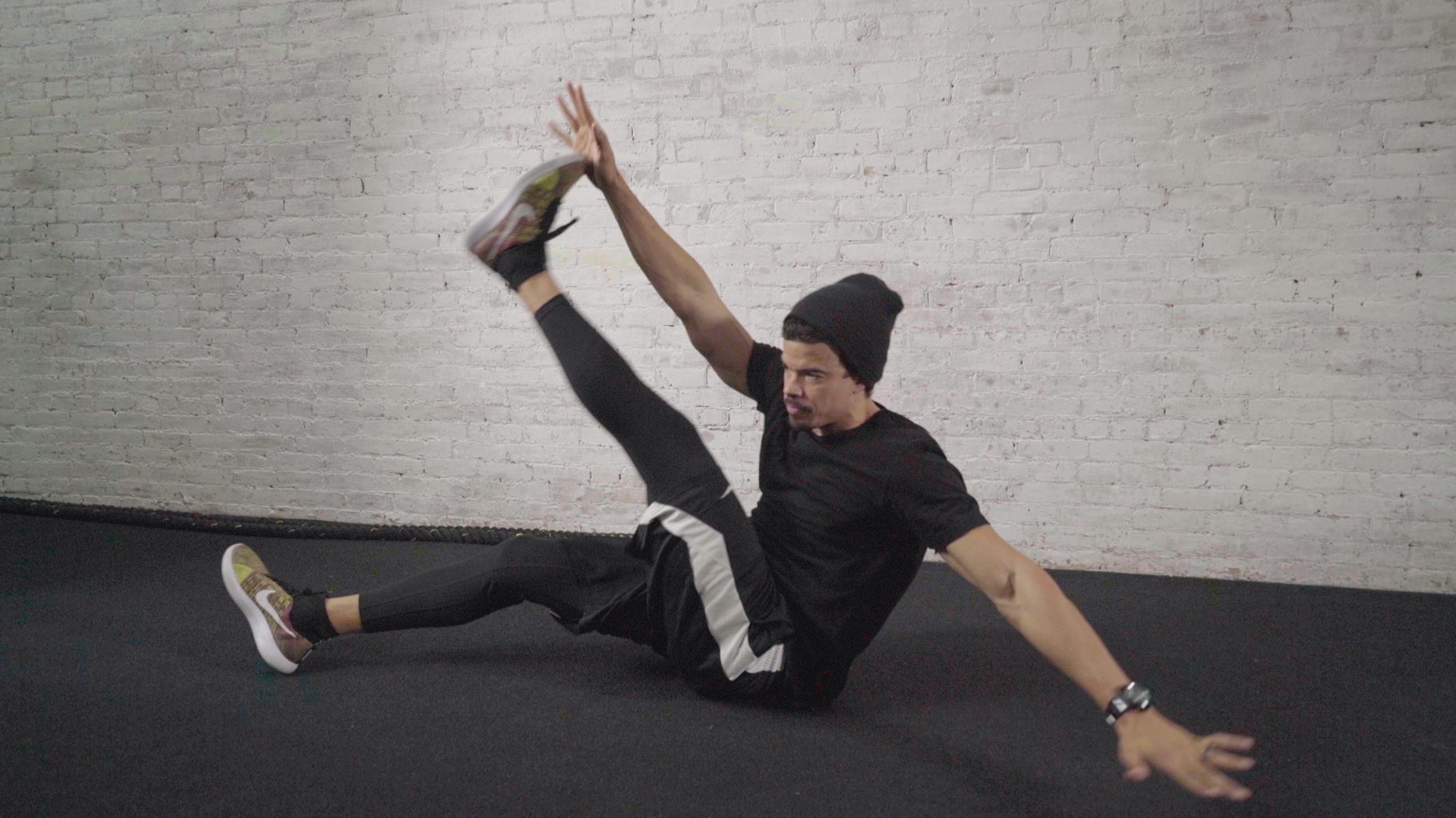 The Move: Side Plank with Hip Raise
The Move: Side Plank with Hip Raise
Why It's Important: Key to a stronger core, the obliques run along the sides of your torso and tend to be overlooked because they're difficult to hit. This side plank variation makes it easy, both training them isometrically and through repeated contractions.
How to Do It: Get on the floor into a side plank, your elbow directly under your shoulder, feet stacked on top of each other. Brace your core so that your body forms straight line. From here, drop your hips until they almost touch the floor, then squeeze through your obliques to raise your hips back up to start.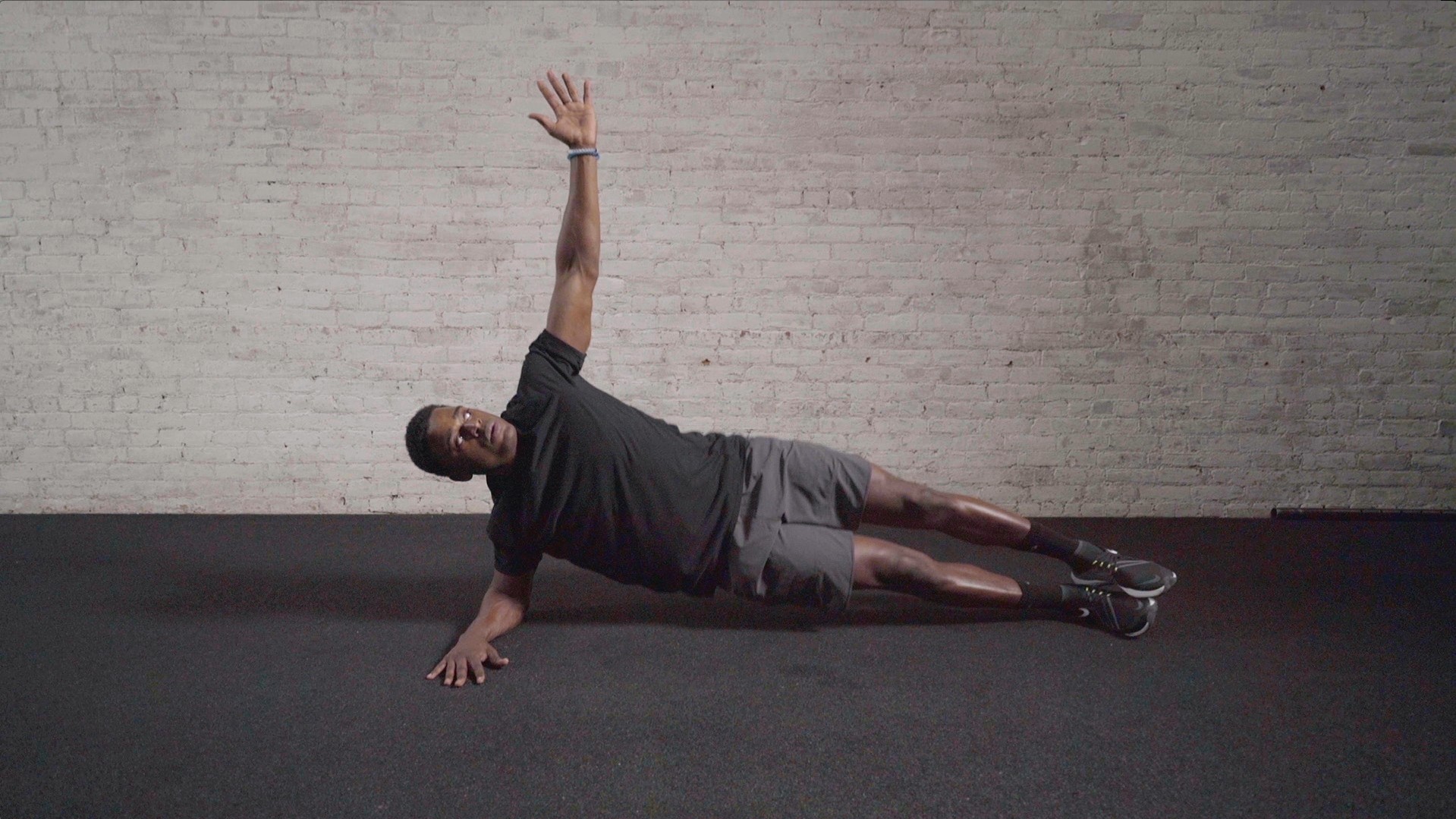
Advertisement
Why It's Important: Rep after rep, reverse lunges hit your glute medius better than almost any other exercise, and that's important, since it's one of the muscles most critical to acceleration. This exercise also hits your hamstrings, quads, calves, and stabilizer muscles, working all the muscles you'll engage on any given run.
How to Do It: Stand tall with your feet hip-width apart and hold a dumbbell in each hand down at your sides. From here, take an exaggerated step backward with one leg, and slowly lower your body until both of your legs form 90-degree angles. Your back heel will lift off of the floor. Try to keep your front knee from jutting very far forward past your toes. Push through the base of your front foot to extend the leg and bring your back foot to start. If you experience knee pain, try leaning your torso forward just slightly while maintaining a flat back.

Why It's Important: While most squat variations will strengthen your glutes, quads, and hamstrings, this one carries the added benefit of working your inner thighs, too.
How to Do It: Stand tall with your feet greater than shoulder-width apart, toes turned out diagonally from your body, and hold a dumbbell at its base with both hands in front of your chest. From here, push your hips back, bend your knees, and lower your body until your thighs are parallel to the floor. Pause, then push through your feet and extend your hips to raise yourself back to start.
Advertisement

Why It's Important: By looping a resistance band around your legs and holding it tight throughout, you'll activate your glute max to an even greater degree while also giving your glute medius (side butt) some much-needed work.
How to Do It: Lie on your back on the floor with your knees bent and feet flat on the floor, shoulder-width apart. Secure a resistance band around your thighs, close to your knees, and open your knees just slightly so that you feel some tension in the sides your hips. From here, squeeze your glutes to lift your hips toward the ceiling so that your body forms a straight line from your knees to your chest. Pause, then slowly reverse the movement back to start. To make it harder, you can do it one leg at a time or hold a dumbbell or barbell on top of your hips.

Why It's Important: This deadlift variation strengthens your whole posterior chain and targets your glutes and hamstrings, both of which are critical to sculpting a stronger butt. Depending on how much weight you load the bar with, it's perfect for both newbies and weight-lifting veterans—just focus on keeping proper form.
How to Do It: Stand tall with your feet hip-width apart and, with an overhand grip, hands just wider than shoulder-width apart, hold a loaded, straight barbell in front of you and touching your thighs. From here, hinge at the hips and, allowing a very slight bend in your knees, slide the bar down your legs. Make sure to maintain a flat back as you descend. Once the bar reaches just below your knees and you feel a slight pull in the back of your thighs, thrust your hips forward to return to start. Squeeze your glutes at the top.
Advertisement

Why It's Important: By taking your typical high plank and adding in rows, this exercise hits your entire core—including your abs, obliques, and back muscles—from every angle. Expect as a side effect to stand taller, look stronger, and walk with more confidence.
How to Do It: Place two dumbbells on the floor, shoulder-width apart, and while holding the dumbbell handles, get into a high plank. Brace your core so that your body forms a straight line from head to heels. If you're having trouble balancing, set your feet wider apart for more support. From here, row one dumbbell to the side of your ribcage, working to keep from "dumping" your weight into the opposite side of your body. Pause, then lower the weight back to the floor.

Why It's Important: By involving both upper- and lower- body flexion and extension, this move does wonders for the entire length of your rectus abominis (your six-pack muscles), which are key to maintaining posture and proper form, both of which tend to break down over the course of a race or long run.
How to Do It: Lie on your back on the floor with your arms and legs extended so that your body forms one long line on the floor. From here, simultaneously crunch your torso up, bringing one arm forward as you do so and raising the opposite leg up off the floor. Touch your opposite hand and foot to each other, pause, and then slowly lower back to start. Focus on not using momentum to swing your body up with each rep.

Why It's Important: Key to a stronger core, the obliques run along the sides of your torso and tend to be overlooked because they're difficult to hit. This side plank variation makes it easy, both training them isometrically and through repeated contractions.
How to Do It: Get on the floor into a side plank, your elbow directly under your shoulder, feet stacked on top of each other. Brace your core so that your body forms straight line. From here, drop your hips until they almost touch the floor, then squeeze through your obliques to raise your hips back up to start.

